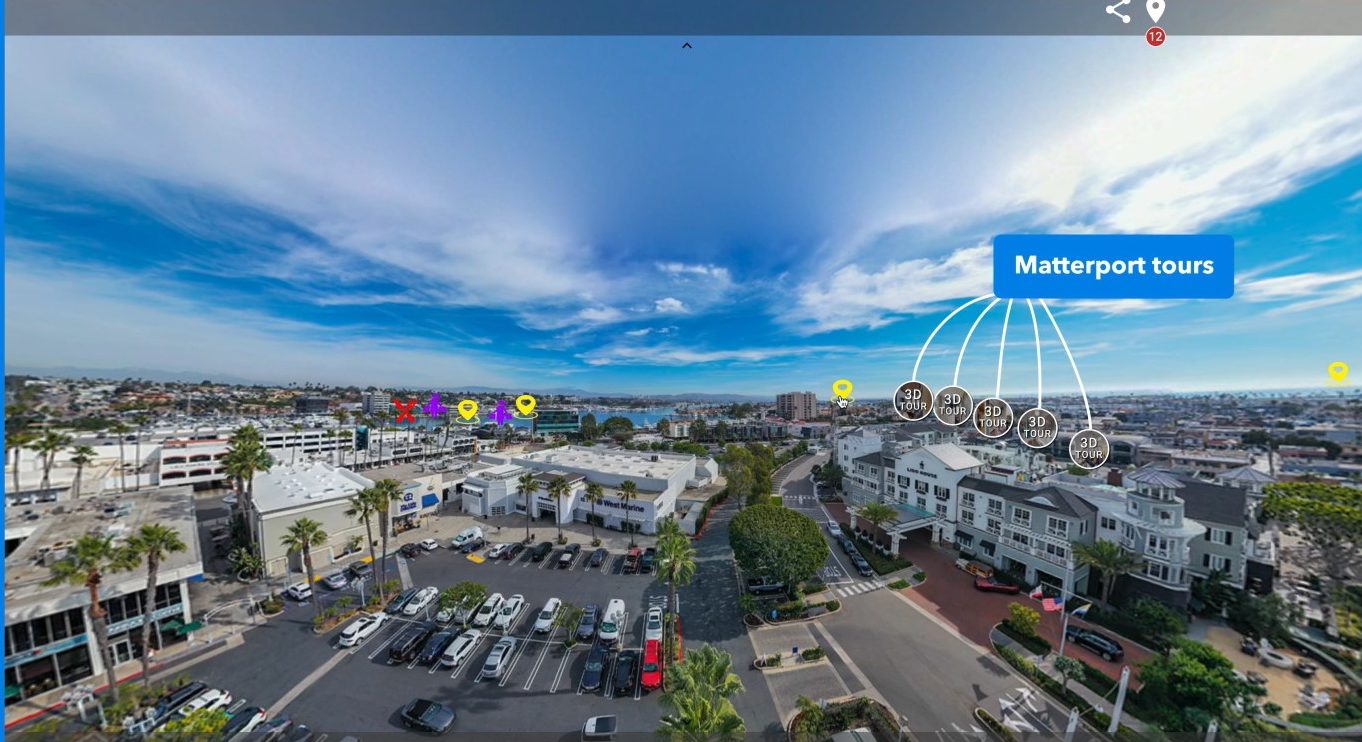real estate 3d
Real Estate 3D: Transforming Property Marketing with Immersive Technology
In today’s fast-moving real estate market, standing out from the crowd is more important than ever. Buyers want more than just photos—they want experiences. That’s why real estate professionals and photographers are embracing 3D technology to showcase properties in dynamic, interactive ways.
Real estate 3D visualization—think 360-degree virtual tours and virtual walkthroughs—is changing how properties are marketed, experienced, and sold. In this article, we’ll explore how 3D technology is reshaping the industry. We will cover its evolution, benefits, available tools, and challenges to watch out for.
Whether you’re a real estate agent or photographer, platforms like www.threesixty.tours make it easy to create immersive virtual tours. These help to wow clients and close deals faster.
I. Introduction
A. What is 3D Technology in Real Estate?
Real estate 3D technology uses digital tools to create lifelike, three-dimensional representations of properties. This includes:
- 3D models
- 360-degree virtual tours
- Augmented reality (AR)
- Virtual reality (VR)
These tools allow potential buyers to explore a property from anywhere. They provide a true sense of space and layout. Instead of flipping through flat photos, users can “walk” through a home, look around, and even interact with the space. It’s the next best thing to being there in person.
B. Why 3D is a Game-Changer for Property Marketing
First impressions count—especially online. Listings with 3D tours consistently get more views and generate more interest. Benefits include:
- Buyers are more engaged
- Buyers stay on listings longer
- Higher likelihood of taking the next step
For photographers, 3D tours offer a new income stream and a way to stand out in a crowded market. Tools like www.threesixty.tours make it simple to create professional, interactive virtual tours without needing advanced tech skills.
C. What You’ll Learn in This Article
We’ll break down:
- How real estate visualization has evolved
- The key benefits of using 3D tools
- The different types of 3D technology available
- Challenges to consider when adopting 3D
- What the future holds for real estate 3D
- And how you can get started today
Let’s dive in.
II. The Evolution of Real Estate Visualization
A. From Print Ads to Digital Tours
Property marketing has come a long way. Decades ago, real estate listings were simple black-and-white ads in newspapers. Then came glossy brochures and professional photography.
The internet changed everything. Suddenly, buyers could view listings online. Early virtual tours emerged, but they were mostly photo slideshows—not very interactive or immersive.
B. From 2D Photos to 3D Experiences
High-quality photos are still important, but they can only show so much. They don’t give buyers a sense of how rooms connect or how the space flows.
3D technology changed that. With virtual tours, buyers can explore every corner of a home. They can look around, zoom in, and navigate through rooms at their own pace. This is especially valuable for luxury and out-of-town buyers who may not see the property in person.
C. Technology That Made It Possible
Several innovations have made real estate 3D more accessible:
- Affordable 360-degree cameras like the Ricoh Theta and Insta360
- Easy-to-use platforms like www.threesixty.tours that let you build and share virtual tours
- Faster internet and cloud storage for smooth, high-quality experiences
- Compatibility with smartphones, tablets, and VR headsets
These tools have leveled the playing field, allowing even small agencies and solo photographers to compete with big firms.
III. Benefits of 3D Technology in Real Estate
A. More Engaging Property Marketing
3D tours are far more engaging than static photos. Buyers can explore properties on their own terms. This makes the experience more personal and memorable.
With www.threesixty.tours, you can add interactive floor plans, hotspots, and even videos to your virtual tours. For example, you can:
- Highlight a cozy fireplace
- Showcase a gourmet kitchen
- Guide users to the backyard pool
All of this can be done within the tour.
B. Smarter Buyer Decisions
When buyers can see a property in 3D, they get a better understanding of the layout and space. This helps them decide faster and with more confidence.
Using 3D tours filters out less serious buyers. If someone takes a full virtual tour and still wants to visit in person, they’re probably ready to move forward. According to a study by the National Association of Realtors, listings with virtual tours get 87% more views than those without. That’s a big difference.
C. Save Money with Virtual Staging
Staging a home can be expensive. Furniture rentals, decorators, and movers all add up. Virtual staging is a cost-effective alternative.
Using 3D rendering, you can furnish an empty home digitally. This shows buyers what a space could look like with stylish furniture and decor—without lifting a finger.
Photographers offering virtual staging can add value to their services and increase their earnings.
D. Reach Buyers Anywhere
In today’s global market, buyers aren’t always local. They could be moving from another state or even another country.
3D virtual tours let you reach them wherever they are. Whether they’re in New York or Tokyo, they can explore your listing from their phone or laptop. This is especially useful in times when travel is limited or in-person showings are difficult.
IV. Types of 3D Technologies in Real Estate
A. 3D Modeling and Rendering
3D modeling creates a digital version of a property. It’s especially useful for pre-construction marketing. Buyers can see what a home will look like before it’s even built.
Renderings can include both the inside and outside of the home, landscaping, and even lighting at different times of day.
If you’re a photographer, learning basic 3D modeling or partnering with a 3D artist can open up new opportunities—especially in commercial and luxury real estate.
B. 360-Degree Virtual Tours
This is the most popular and practical form of real estate 3D. Using a 360-degree camera, you capture panoramic images of each room. These are stitched together to create a seamless, interactive experience.
With www.threesixty.tours, you can upload your images, organize them into scenes, and add navigation tools, labels, and multimedia elements. It’s intuitive and doesn’t require coding or design skills.
C. Augmented Reality (AR) and Virtual Reality (VR)
AR lets users overlay digital images on the real world using their phone or tablet. For example, they can see how a couch would look in their living room.
VR takes it further. With a headset, users are fully immersed in a digital replica of the property. While still emerging, VR is gaining traction in high-end real estate and architectural design.
D. Drones and 3D Mapping
Drones can capture aerial views and create 3D maps of large properties or developments. This is great for showing off land, nearby amenities, or neighborhood features.
Photographers who invest in drone technology can offer a complete marketing package. This includes both ground-level and aerial visuals.
V. Challenges and Considerations
A. Upfront Costs
Quality 3D cameras, editing software, and hosting platforms can be pricey. But the investment often pays off quickly.
Platforms like www.threesixty.tours offer flexible pricing plans. This way, you can start small and scale up as your business grows.
B. Learning New Skills
If you’re not tech-savvy, diving into 3D tools can feel overwhelming. But most platforms offer tutorials, customer support, and communities to help you learn.
Start with simple 360 tours, then explore more advanced features as you gain confidence.
C. Accuracy and Compliance
It’s important to be transparent. If a room is virtually staged, say so. If a floor plan isn’t to scale, include a disclaimer.
Buyers appreciate honesty. Staying compliant with local regulations protects your reputation.
D. Managing Expectations
Some clients may still prefer in-person tours or question the accuracy of virtual ones. Explain that 3D tours are a powerful supplement—not a replacement—for physical showings.
Once they experience the convenience and detail of a virtual tour, most are quickly won over.
VI. The Future of Real Estate 3D
A. What’s Next?
3D technology is only getting better. AI-powered tour creation, real-time rendering, and deeper integration with MLS platforms are just around the corner.
Expect smarter tools that automate editing, suggest staging options, and even guide users through tours with voice assistants.
B. Staying Ahead of the Curve
To stay competitive, real estate professionals and photographers need to keep up with these changes. This means exploring new tools, upgrading gear, and continuously learning.
Platforms like www.threesixty.tours are constantly evolving. They provide users access to the latest features and innovations.
C. A New Era for Real Estate
3D technology is more than a trend—it’s a shift in how we buy and sell property. It empowers buyers, makes marketing more effective, and opens up new opportunities for photographers and agents.
By embracing 3D, you’re not just keeping up—you’re leading the way.
Conclusion
Real estate 3D is transforming the industry. From immersive virtual tours to AR-enhanced walkthroughs, it’s changing the way buyers experience homes.
With tools like www.threesixty.tours, creating professional 3D tours is easier and more affordable than ever. Whether you’re an agent looking to boost your listings or a photographer expanding your services, now is the time to get on board.
The future of real estate is immersive, interactive, and undeniably three-dimensional.
Want to see how easy it is to create stunning 3D virtual tours? Visit www.threesixty.tours and start your free trial today.
External References
National Association of Realtors (NAR): 2023 Home Buyers and Sellers Generational Trends Report – https://www.nar.realtor/research-and-statistics
Forbes: “How Virtual Reality Is Redefining Real Estate Marketing” – https://www.forbes.com/sites/forbestechcouncil/2023/01/04/how-virtual-reality-is-redefining-real-estate-marketing


